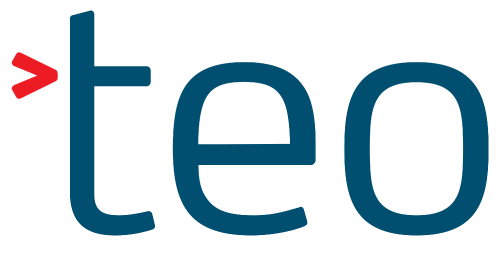From Concept to Deployment: The Complete Software Development Life Cycle (SDLC)

Creating software is a journey that requires planning, collaboration, and the right tools. The Software Development Life Cycle (SDLC) is a structured approach that guides this process, ensuring that software is built effectively, meets user needs, and is deployed successfully. Whether you’re interested in software development, project management services, or exploring backend best practices, understanding the SDLC is essential.
In this blog, we’ll walk through each phase of the SDLC, explain how popular methodologies like Waterfall and Agile apply, and look at tools that can make each step smoother, from planning to deployment.
What is the Software Development Life Cycle (SDLC)?
The Software Development Life Cycle is a framework that defines the stages of creating software, from initial planning to ongoing maintenance. SDLC helps manage the complexities of software projects and provides a clear process for team members to follow. Whether you’re developing a simple app or a complex enterprise solution, the SDLC ensures a structured, systematic approach to deliver quality software on time.
Phases of the SDLC
Let’s break down each stage of the SDLC and explore what happens at each phase.
1. Planning
Goal: Establish project requirements, goals, and scope.
In the planning phase, the team gathers requirements from stakeholders, defines the project’s objectives, and outlines a roadmap for development. This phase is crucial for setting the foundation, as any misunderstandings here can lead to costly changes later on.
Tools for Planning:
- Project Management Services like Jira or Trello help teams manage tasks and timelines.
- Requirements Management tools like Confluence keep project documentation organized.
2. Design
Goal: Create a blueprint for the software’s architecture and user interface.
In the design phase, developers and designers collaborate to define the structure of the application. This includes deciding on backend best practices, database structures, and the user experience. Design documents serve as a roadmap, detailing how the software will look and function.
Tools for Design:
- UI/UX Design Tools like Figma and Adobe XD help create visual layouts.
- Architecture Design tools like Lucidchart or Microsoft Visio aid in building clear, detailed system architectures.
3. Development
Goal: Write the code to bring the design to life.
The development phase is where the actual coding happens, and backend best practices play a significant role here. Developers write the front-end and back-end code, ensuring security, scalability, and efficiency. Teams often use version control systems to track changes, and DevOps practices can streamline development and deployment.
Tools for Development:
- Code Editors like Visual Studio Code and IntelliJ IDEA provide a productive coding environment.
- Version Control tools like Git or GitHub allow for collaborative development and code management.
- DevOps platforms like Docker and Kubernetes make deployment smoother and more efficient.
4. Testing
Goal: Ensure the software is reliable, performs well, and is bug-free.
Testing is essential to ensure that the software functions as expected. In this phase, teams use a range of AI software testing tools to automate repetitive tests and detect potential bugs early. Testing can include unit tests, integration tests, performance tests, and user acceptance tests.
Tools for Testing:
- AI Software Testing tools like Testim and Functionize use artificial intelligence to run smarter, faster tests.
- Automated Testing platforms like Selenium and JUnit help automate and standardize testing.
- Bug Tracking tools like Bugzilla or Jira record and manage test findings and issues.
5. Deployment
Goal: Launch the software to the intended environment.
Once testing is complete and the software is ready for release, it moves to deployment. Deployment might involve transferring the software to a production server, setting up necessary configurations, and ensuring everything runs smoothly. DevOps practices are often used in this phase to automate and streamline the deployment process, reducing manual work and minimizing errors.
Tools for Deployment:
- CI/CD Tools like Jenkins or GitLab CI/CD automate deployment tasks and minimize downtime.
- Cloud Services such as AWS, Azure, and Google Cloud offer reliable and scalable hosting solutions.
- Containerization tools like Docker make deployment consistent across environments.
6. Maintenance
Goal: Ensure the software remains functional, secure, and up-to-date.
The SDLC doesn’t end with deployment. In the maintenance phase, developers monitor the software for bugs, performance issues, and security risks. Updates, patches, and improvements are regularly made based on user feedback and changing requirements. Maintenance ensures that the software continues to deliver value over time.
Tools for Maintenance:
- Monitoring Tools like Datadog or New Relic keep track of application performance and detect potential issues.
- Issue Tracking systems like Zendesk or Freshdesk allow users to report issues and developers to track resolutions.
- Patch Management tools automate updates and keep the software secure.
SDLC Methodologies: Waterfall vs. Agile
Different methodologies guide how teams approach the SDLC, with Waterfall and Agile being two of the most common.
- Waterfall: A linear approach where each phase must be completed before moving to the next. Waterfall is useful for projects with clearly defined requirements and minimal changes.
- Agile: A flexible approach where work is done in iterative cycles called sprints. Agile is ideal for projects where requirements may evolve, as it allows for regular feedback and adaptations.
Which to Choose: Agile is often favored for modern software development due to its flexibility and focus on collaboration. However, Waterfall can be beneficial for projects with stable, unchanging requirements.
Why Understanding the SDLC Matters
Mastering the Software Development Life Cycle is essential for anyone involved in software development or project management services. By understanding each phase and knowing how to apply backend best practices, DevOps tools, and AI software testing, teams can create more efficient, scalable, and user-friendly software. Adhering to the SDLC ensures that projects are completed on time, meet requirements, and deliver high-quality results.
Conclusion
The Software Development Life Cycle is a valuable framework that provides structure and clarity to the complex process of software development. Each phase, from planning to maintenance, plays a crucial role in delivering software that is functional, secure, and scalable. By applying the right tools and methodologies—whether it’s DevOps for deployment or AI software testing for quality assurance—you can optimize every step of the journey.
Understanding and using the SDLC is key to becoming a successful software developer, project manager, or stakeholder in today’s fast-paced tech landscape.
